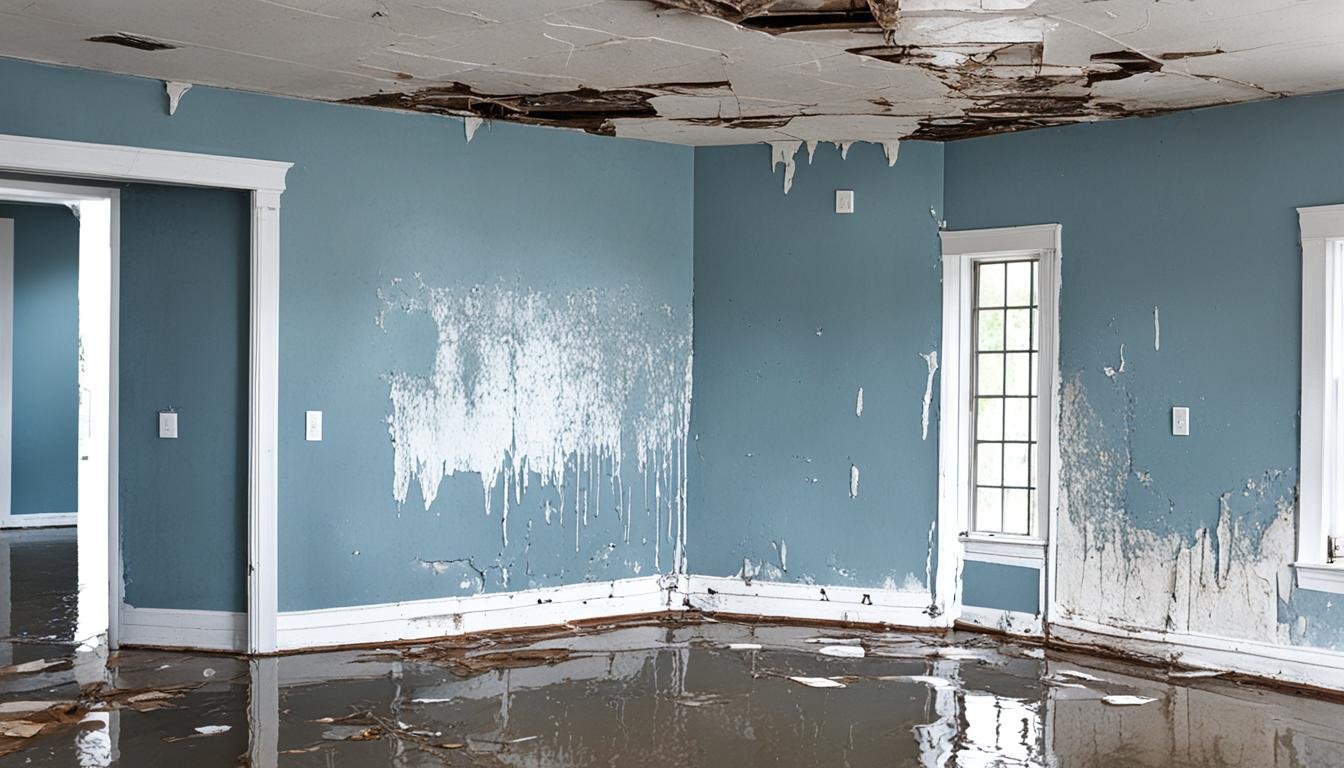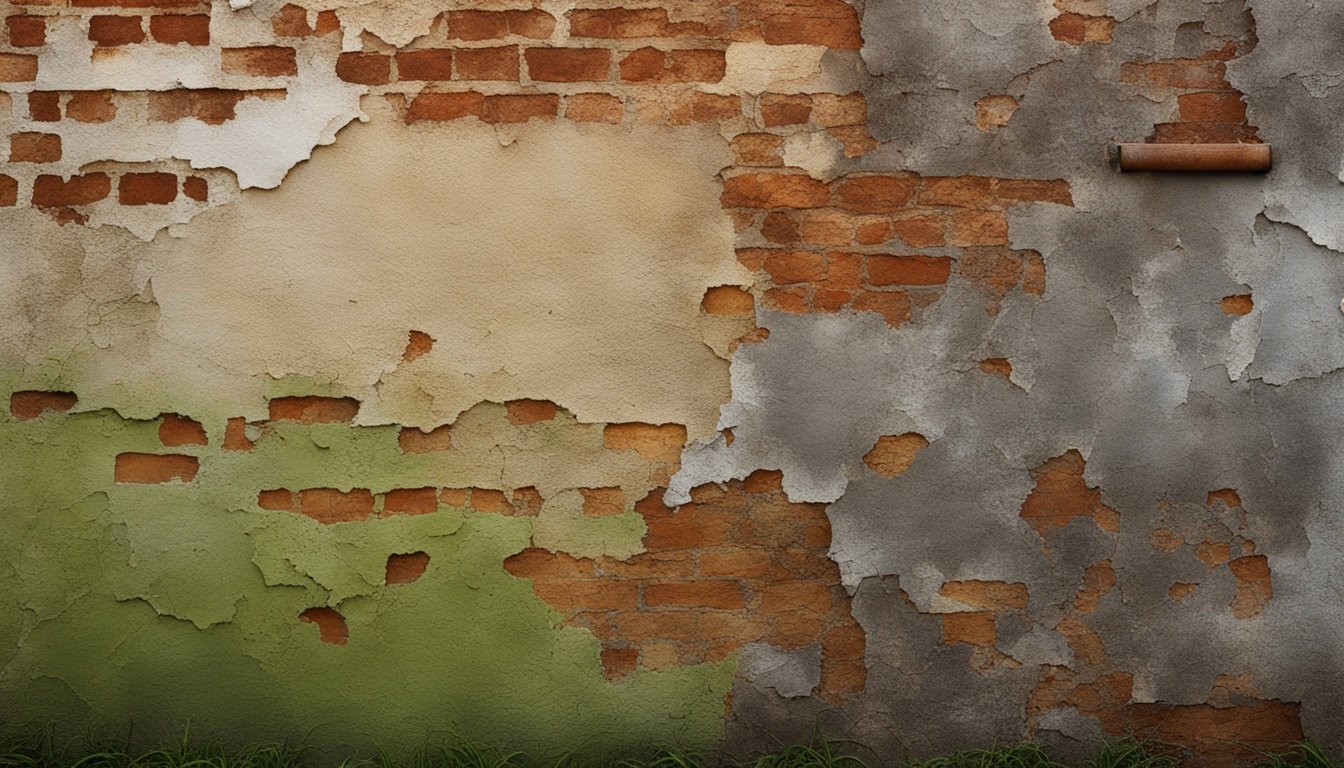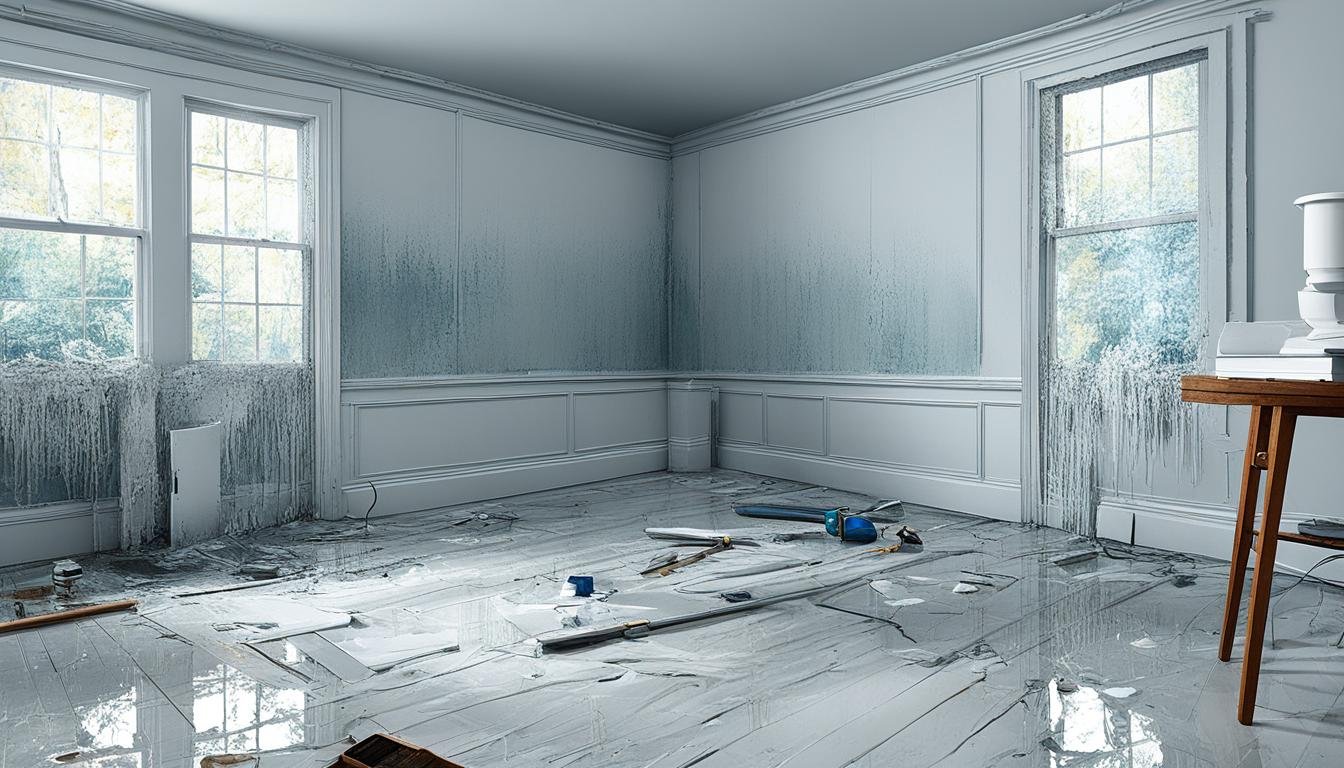Extent of Water Damage to a House
Around 14,000 people in the U.S. face water damage each day. One in 60 insured homes claims water or freezing damage yearly. The average insurance payout stands at $11,605. These numbers show how serious water damage is. It can harm a home’s structure and affect people’s health. Key Takeaways Water damage is a widespread issue, affecting around 14,000 people daily in the U.S. 1 in 60 insured homes makes a water damage or freezing claim each year, with an average payout of $11,605. Water damage can lead to a range of health problems, including respiratory issues and allergic reactions. Prompt and professional water damage restoration is crucial to mitigate further damage and protect the health of homeowners. Comprehensive services like water damage restoration, mold remediation, and flood damage repair are essential for fully addressing the impact of water damage. Signs and Types of Water Damage Spotting water damage signs early is key for homeowners. By noticing these signs, you can prevent a lot of trouble. Look for Water Stains, Humidity and Dampness, and Mold Growth. Strange Noises/Dripping and Soft Spots or Paint Damage are red flags too. Health problems like allergies can also point to water damage, often because of mold. Signs might include Discoloration, Peeling or Bubbling Paint or Wallpaper. You could even see Warped or Sagging Walls and Soft or Spongy Walls. Different Sources of Water Damage Water damage has many sources, like bad weather and leaky pipes. It’s important for homeowners to regularly check their homes. This can catch issues early and prevent more serious damage. Source of Water Damage Potential Consequences Severe Weather (e.g., heavy rain, flooding) Structural damage, mold growth, destroyed belongings Clogged Gutters Water pooling, foundation issues, roof damage Leaking Pipes Water stains, soft spots, mold, wall/floor damage Malfunctioning Appliances (e.g., washing machine, dishwasher) Flooding, water damage to floors and walls Quick response and getting help from a trusted pro team is crucial. Early fixing can prevent more problems and keep you safe. Extent of Water Damage to a House The amount of water damage in a home can vary a lot. It depends on how bad the incident was, the type of water, and where it hit. It’s key to know the different water damage classes and their restoration costs. This helps pick the right next steps. Water damage falls into four groups: Class 1: This is when only a part of a room gets wet. Little water gets into the building materials. Class 2: It affects a whole room and soaks deeper into things like carpet and walls. Class 3: Water spreads to the walls, insulation, and more, making it very severe. Class 4: This is for hard-to-dry places like wood floors, concrete, or crawlspaces. Special drying methods are needed here. The restoration costs can vary for each type of water damage. Repairing water damage might cost between $1,000 and $4,500 on average. Severe cases can go up to $7,000 or more. In flood-prone areas, a home’s value might drop by $11,000 because of the risk of water damage. Water contamination levels also affect the repair cost. Fixing clean water damage (Class 1) is cheaper. But repairs for water with sewage (Class 3) are more costly and difficult. Flood damage is very serious. The average NFIP claim to fix flood damage is $52,000. This is much more than the usual FEMA relief of $4,200. Having good flood insurance is important because regular home insurance often doesn’t cover it. Quick and professional help in fixing water damage is important. For instance, services from companies like San Bernardino Water Damage Restoration Pros are invaluable. They help reduce long-term damage and prevent issues like mold and weakened structures. “Fixing water damage early can boost a home’s value by up to 10%. It saves money in the long term by avoiding costly mold, pest, or structural problems.” Regular checks, maintaining gutters and downspouts, and using water alarms and sump pumps can prevent water damage. Knowing about water damage and acting early will help homeowners protect their homes. It also helps maintain the value and safety of their property. Conclusion Water damage can affect a home’s health and value. This article covered the signs and types of Water Damage Restoration, where water can come from, and the costs involved. Early detection and getting expert help are key to lessen damage. With Water Damage Pros – San Bernardino‘s guidance, homeowners can fix issues and keep their homes safe. Quick action after water trouble, whether from a storm or a leak, is vital. With help from your local Water Damage Pros, you protect your family and your house from harm. FAQ What are the common signs of water damage in a house? Signs of water damage include water stains and soggy walls. You might also see mold and hear water dripping. Health issues like allergies can sometimes be a sign, too. What are the different sources of water damage? Water damage comes from many places. These can include storms and overflowing gutters. Leaking pipes and malfunctioning appliances also cause a lot of damage. How is the extent of water damage to a house classified? The damage is put into different categories. This is based on how much water there is and where it goes in your home. Fixing flooding can be expensive. Most people get about ,000 to repair the damage. Why is it important to have professional water damage restoration services? Getting help quickly reduces the damage. It stops mold and makes your home like new again. Water Damage Pros – San Bernardino works fast so you can get back to normal quickly. What is the average cost of water damage restoration? On average, it costs about ,605 to fix water damage. But the real cost can be much higher. You should talk to experts to know exactly how much it will cost. They’ll give you a fair estimate. Source Links https://pureoneservices.com/3-major-factors-determining-the-extent-of-water-damage/ https://www.rubyhome.com/blog/water-damage-stats/ https://jenkinsrestorations.com/how-to-spot-water-damage-in-your-home/ https://www.servpro.com/resources/water-damage/what-does-water-damage-look-like https://www.servicemasterrestore.com/blog/water-damage/watch-out-top-signs-of-water-damage-at-home/ https://certifiedrestorationinc.com/blog/water-damage-signs-dangers https://arstechnica.com/civis/threads/considering-buying-a-house-with-water-damage.42139/ https://callallklean.com/is-water-damage-permanent-learn-how-to-identify/ https://www.carolinafoundationsolutions.com/blog/the-effects-water-damage-has-on-home-value-and-real-estate-transactions/ https://blog.magicplan.app/how-to-document-water-damage https://campuspress.yale.edu/ledger/how-to-examine-your-house-for-damage-after-a-storm/ https://ibuyer.com/blog/water-damage-house-repair-costs/




